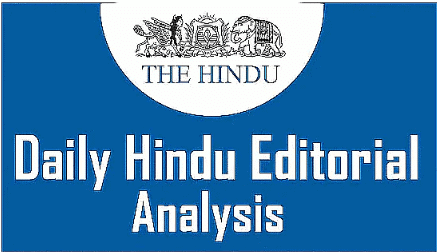UPSC Exam > UPSC Notes > Current Affairs & Hindu Analysis: Daily, Weekly & Monthly > The Hindu Editorial Analysis- 15th March 2025
The Hindu Editorial Analysis- 15th March 2025 | Current Affairs & Hindu Analysis: Daily, Weekly & Monthly - UPSC PDF Download

Modern day summitry, its perils and its prospects
Why in News?
The article explores how strong leaders like Trump and Modi use summit diplomacy to influence global politics, trade, and conflict resolution.
Definition of Strong Leaders
- A strong leader is someone with significant power who shapes public policy and guides their political party.
- Current examples include U.S. President Donald Trump and India’s Prime Minister Narendra Modi.
- Italian Prime Minister Giorgia Meloni sees Trump and Modi as pivotal in creating a “New Conservative Movement.”
- These leaders utilize summit diplomacy to make crucial decisions on global matters such as war and peace.
History and Importance of Summit Diplomacy
- Summit diplomacy has its roots in historical events like the Congress of Vienna (1814-15), which redefined Europe post-Napoleonic Wars.
- Contemporary instances include the Camp David Accords (1978), fostering peace between Egypt and Israel.
- Notable figures like U.S. President Ronald Reagan and Soviet leader Mikhail Gorbachev employed summit diplomacy to mitigate Cold War tensions.
- Despite its potential, many summits yield superficial agreements due to leaders’ emphasis on success and strong public image.
- A significant failure in summit diplomacy was the West’s miscalculation of Saddam Hussein’s nuclear capabilities in Iraq.
The Trump-Zelenskyy Meeting and Its Impact
- On February 28, 2025, a public exchange between Trump and Ukrainian President Volodymyr Zelenskyy diverged from typical private summits, emphasizing public grandstanding over conflict resolution.
- Trump’s ultimatum to Zelenskyy underscored the urgency of a deal to maintain U.S. support in the Ukraine-Russia conflict.
- Zelenskyy’s counterproposal of offering mineral rights in exchange for military aid highlighted the contentious nature of the discussions.
- The disagreement prompted European nations to reassess their stance, culminating in a hastily arranged meeting in London.
- The UK Prime Minister’s call for increased European responsibility in Ukraine’s defense, including potential troop and plane deployments, lacked a clear strategic framework.
India-U.S. Summit Diplomacy Under Modi and Trump
- During their meeting on February 13, 2025, Modi and Trump maintained a diplomatic tone despite past tensions over India’s tariff policies.
- Analysts suggest that while PM Modi made some concessions, Trump did not dominate the negotiations.
- A primary focus for the U.S. was enhancing defense sales to India, with discussions around potential F-35 fighter jet deals.
- The joint statement following the meeting was ambiguous, emphasizing general commitments to collaboration while prioritizing defense sales.
- PM Modi’s preparation for the meeting involved consultations with key U.S. figures and business leaders, including Elon Musk.
Challenges and Future of Summit Diplomacy
- Traditional summit diplomacy focuses on resolving conflicts, building peace, and fostering relationships.
- However, contemporary leaders often approach summits unprepared, reducing them to public relations exercises.
- Despite its shortcomings, summit diplomacy is a vital aspect of modern international relations.
- Given the increasing complexity of global challenges, leaders are expected to rely more on summits for cooperative solutions.
Conclusion
- Summit diplomacy plays a crucial role in global politics, providing avenues for resolving conflicts and fostering cooperation.
- Nonetheless, the lack of adequate preparation can transform these summits into mere public relations activities with limited meaningful outcomes.
The document The Hindu Editorial Analysis- 15th March 2025 | Current Affairs & Hindu Analysis: Daily, Weekly & Monthly - UPSC is a part of the UPSC Course Current Affairs & Hindu Analysis: Daily, Weekly & Monthly.
All you need of UPSC at this link: UPSC
|
38 videos|5288 docs|1117 tests
|
FAQs on The Hindu Editorial Analysis- 15th March 2025 - Current Affairs & Hindu Analysis: Daily, Weekly & Monthly - UPSC
| 1. What are the main challenges faced by modern day summitry? |  |
Ans. Modern day summitry faces several challenges, including geopolitical tensions, differing national interests, communication breakdowns, and the rise of populism. The complexity of global issues like climate change, trade disputes, and security threats also complicate diplomatic negotiations, making consensus harder to achieve.
| 2. How has the format of international summits changed in recent years? |  |
Ans. In recent years, the format of international summits has evolved to include more virtual meetings and hybrid formats, allowing for greater participation. There is also a growing emphasis on inclusivity, with non-state actors, civil society, and private sector representatives often included in discussions, reflecting a broader range of perspectives.
| 3. What role do emerging economies play in modern summitry? |  |
Ans. Emerging economies play a crucial role in modern summitry by representing a significant portion of the global population and economic growth. Their participation is increasingly vital for addressing global issues like climate change, trade policies, and security. They often bring new viewpoints and solutions that can reshape traditional power dynamics.
| 4. Why are summits considered important for global governance? |  |
Ans. Summits are important for global governance as they provide a platform for world leaders to discuss and coordinate on pressing global issues. They facilitate dialogue, build trust among nations, and can lead to binding agreements or collaborative initiatives that address challenges that no single country can solve alone.
| 5. What are the prospects for future international summits? |  |
Ans. The prospects for future international summits are mixed. While there is potential for enhanced collaboration on global challenges, rising nationalism and protectionism might hinder progress. However, the increasing urgency of issues like climate change and health crises could foster a renewed commitment to multilateralism and cooperation among nations.
Related Searches
















